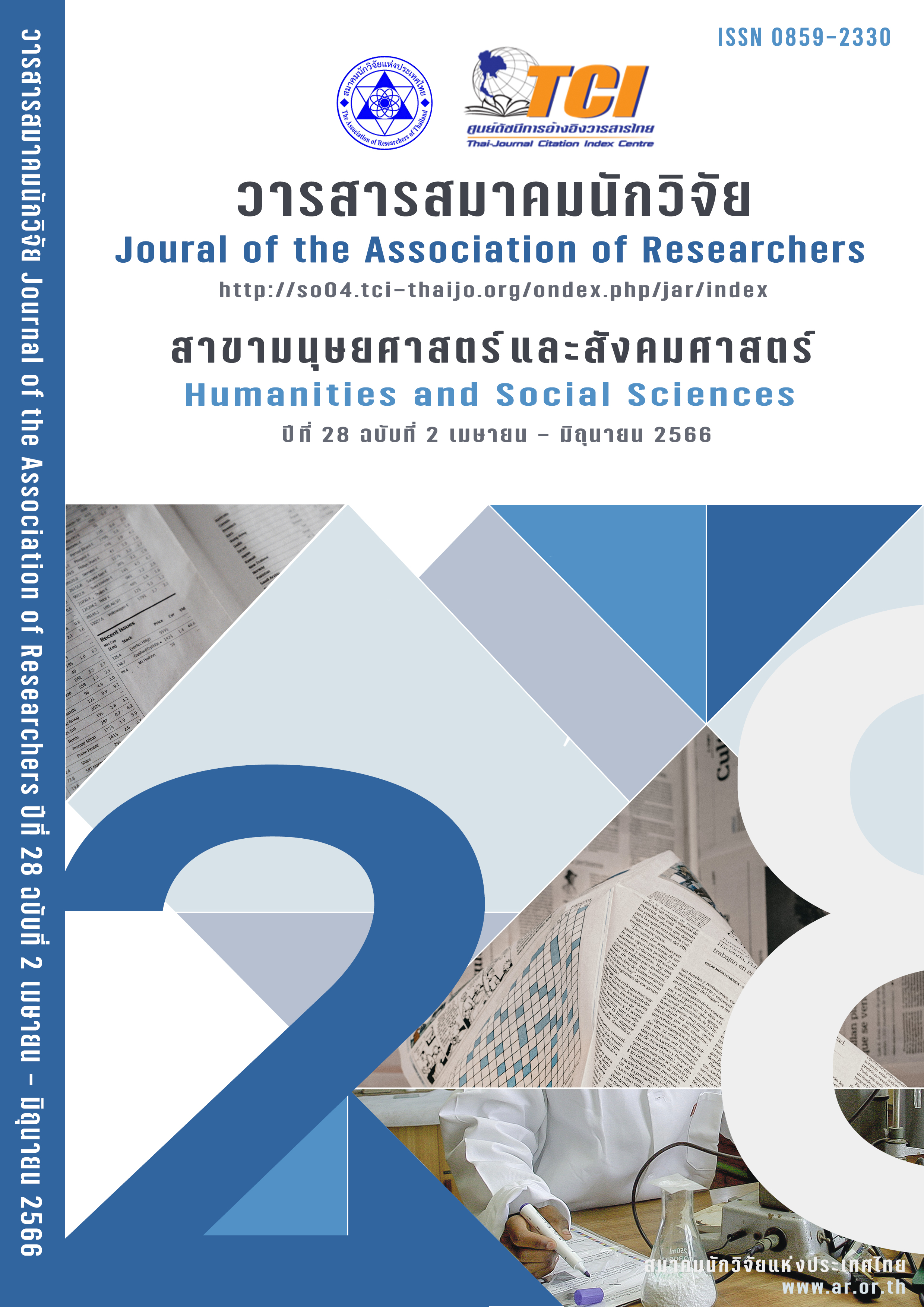The Influence of Intangible Culture Heritage Image on Tourists' Cultural Identity
Main Article Content
Abstract
This research article aims to examine the effect of image of intangible cultural toward cultural identity the image of intangible culture heritage(IICH) is an important concept of tourists in the process of tourism decision-making, which affects tourists' subjective consciousness and the choice of tourism activities. From the perspective of tourists, based on the theory of perceived value(PV), identity theory and symbol interaction theory, this study conducted an empirical study on the internal relationship among the IICH, tourists' PV and cultural identity(CI). Questionnaire and research model are designed to explore the tourists' cognition of the image of "Pingyao Tuiguang Lacquerware Painting Technology" and its influence on tourists' CI. Using the research model and hypothesis as a foundation, a questionnaire survey was used to gather the pertinent data, which was then evaluated and examined using a structural equation model (SEM). The results show that IICH, on tourists' CI, perceived novelty value, perceived emotional value, and perceived social value all have a beneficial impact. IICH has significant positive influence on perceived value(PV); Perceived emotional value and perceived social value play a significant mediating role between IICH and CI. The research results supplement the research on the CI of ICH tourism and provide a basis for the development of cultural heritage tourism. Through the above empirical verification, the structural equation conceptual model of the IICH and tourists' The relationship between latent variables can be more accurately reflected and evaluated by the path relation. In the study for future, there should be a study using a qualitative research method in order to obtain more complete and comprehensive information.
Article Details

This work is licensed under a Creative Commons Attribution-NonCommercial-NoDerivatives 4.0 International License.
บทความที่ปรากฏในวารสารนี้ เป็นความรับผิดชอบของผู้เขียน ซึ่งสมาคมนักวิจัยไม่จำเป็นต้องเห็นด้วยเสมอไป การนำเสนอผลงานวิจัยและบทความในวารสารนี้ไปเผยแพร่สามารถกระทำได้ โดยระบุแหล่งอ้างอิงจาก "วารสารสมาคมนักวิจัย"
References
Chen,Ching-Fu. & Chen,Fu-Shian. (2010). Experience Quality, Perceived Value,
Satisfaction and Behavior Intentions for Heritage Tourists. Tour.Manage.31, 29-35.
Gonzalez,M.V. (2008). Intangible heritage tourism and identity. Tour.Manage. &807–810.
Hair, J.F., Black, W.C., Babin, B.J. and Anderson, R.E. (2010) Multivariate Data Analysis.
th Edition, Pearson, New York.
Hair, J., Black, W., Babin, B., Anderson, R. and Tatham, R. (2006) Multivariate Data
Analysis. 6th Edition, Pearson Prentice Hall, Upper Saddle River.
Ishida,K., Slevitch,L.& Siamionava,K. (2016). The Effects of Traditional and Electronic
Word-of-Mouth on Destination Image: A Case of Vacation Tourists Visiting Branson, Missouri. Adm. Sci. 6, 12.
Keller,L.K. (1998). Building, measuring and managing brand equity. J.Brand.Manag, 6,142-
Li,J. M. & Li,W (2018). The way of tourism activation of intangible cultural heritage. Tour
Trib, 33,11-12.
Mehmood,S., Liang,C. & Gu,D (2018). Heritage image and attitudes toward a heritage site:
Do they really mediate the relationship between user-generated content and travel intentions toward a heritage site?.
Sustainability,10,4403.
Peng,A.C., Dyne,L.V. & Oh,K. (2015). The Influence of Motivational Cultural Intelligence
on Cultural Effectiveness Based on Study Abroad: The Moderating Role of Participant’s Cultural Identity. J.Manag.Educ. 1-25.
Prebensen,N.K. & Xie,J. (2017). Efficacy of co-creation and mastering on perceived value
and satisfaction in tourists’ consumption. Tour.Manage. 60, 166-176.
Rindell,A. (2013). Time in corporate images: Introducing image heritage and image-in-use.
Qual.Mark.Res.16,197-213.
Saeedi,H. & Hanzaee,K.H. (2018). The effects of heritage image on destination branding:
An Iranian perspective. J.Herit.Tour.13, 152-166.
Sheth,J.N., Newman,B.I. & Gross,B.I. (1991). Consumption values and market
choice;South Western Publishing Company : Cincinnati, OH,USA.
Wang ,Y. & Hu,H.L. (2014). Cultural identity:the core mechanism for the survival and
development of intangible cultural heritage. Fujian Forum (Humanities and Social Sciences Edition),10, 49-55.
Wong,I.A. & Cheng, M. (2014). Exploring the Effects of Heritage Site Image on Souvenir
Shopping Attitudes: The Moderating Role of Perceived Cultural Difference. J.Travel.Tour.Mark., 31,476-492.
Wu,H.C.& Li,T. (2017). A Study of Experiential Quality, Perceived Value, Heritage Image,
Experiential Satisfaction, and Behavioral Intentions for Heritage Tourists. J.Hosp.Tour.Res. 41,904-944.


